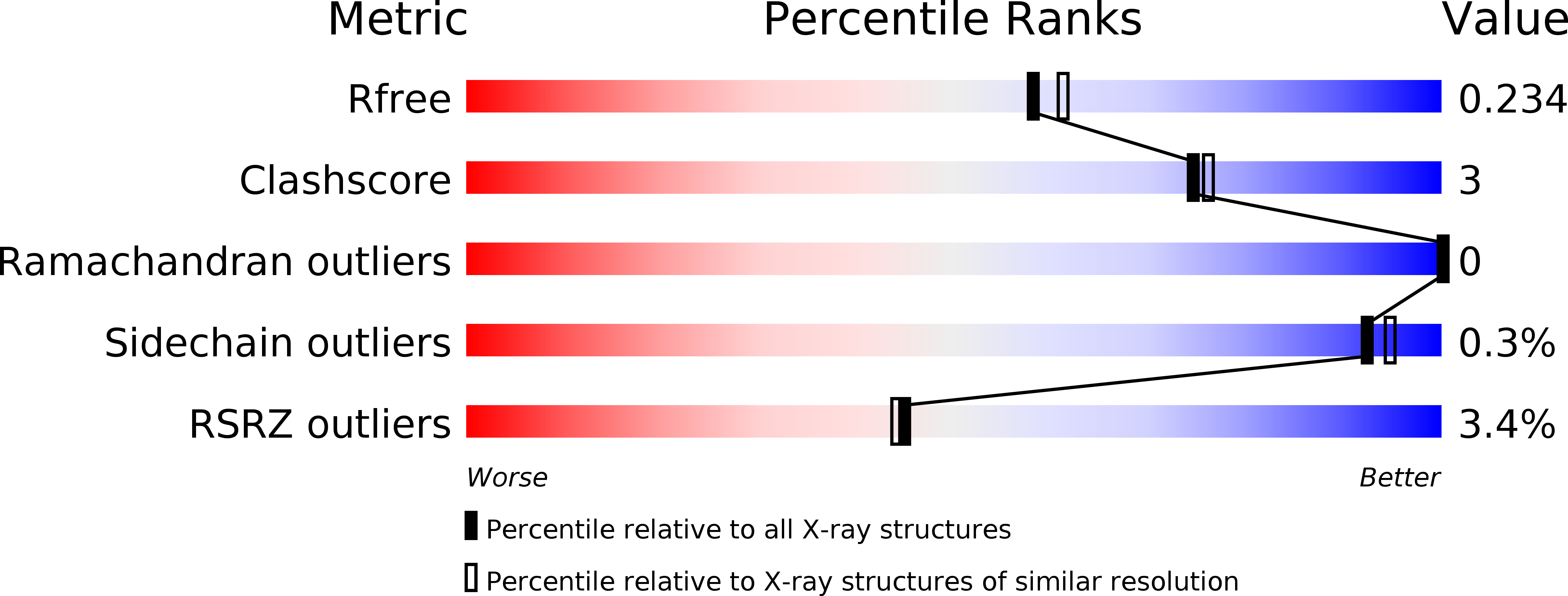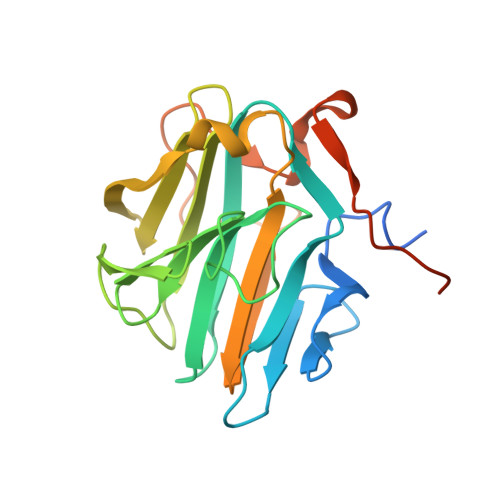Structure of the SPRY domain of the human RNA helicase DDX1, a putative interaction platform within a DEAD-box protein.
Kellner, J.N., Meinhart, A.(2015) Acta Crystallogr F Struct Biol Commun 71: 1176-1188
- PubMed: 26323305
- DOI: https://doi.org/10.1107/S2053230X15013709
- Primary Citation of Related Structures:
4XW3 - PubMed Abstract:
The human RNA helicase DDX1 in the DEAD-box family plays an important role in RNA processing and has been associated with HIV-1 replication and tumour progression. Whereas previously described DEAD-box proteins have a structurally conserved core, DDX1 shows a unique structural feature: a large SPRY-domain insertion in its RecA-like consensus fold. SPRY domains are known to function as protein-protein interaction platforms. Here, the crystal structure of the SPRY domain of human DDX1 (hDSPRY) is reported at 2.0 Å resolution. The structure reveals two layers of concave, antiparallel β-sheets that stack onto each other and a third β-sheet beneath the β-sandwich. A comparison with SPRY-domain structures from other eukaryotic proteins showed that the general β-sandwich fold is conserved; however, differences were detected in the loop regions, which were identified in other SPRY domains to be essential for interaction with cognate partners. In contrast, in hDSPRY these loop regions are not strictly conserved across species. Interestingly, though, a conserved patch of positive surface charge is found that may replace the connecting loops as a protein-protein interaction surface. The data presented here comprise the first structural information on DDX1 and provide insights into the unique domain architecture of this DEAD-box protein. By providing the structure of a putative interaction domain of DDX1, this work will serve as a basis for further studies of the interaction network within the hetero-oligomeric complexes of DDX1 and of its recruitment to the HIV-1 Rev protein as a viral replication factor.
Organizational Affiliation:
Department of Biomolecular Mechanisms, Max Planck Institute for Medical Research, Jahnstrasse 29, 69120 Heidelberg, Germany.














